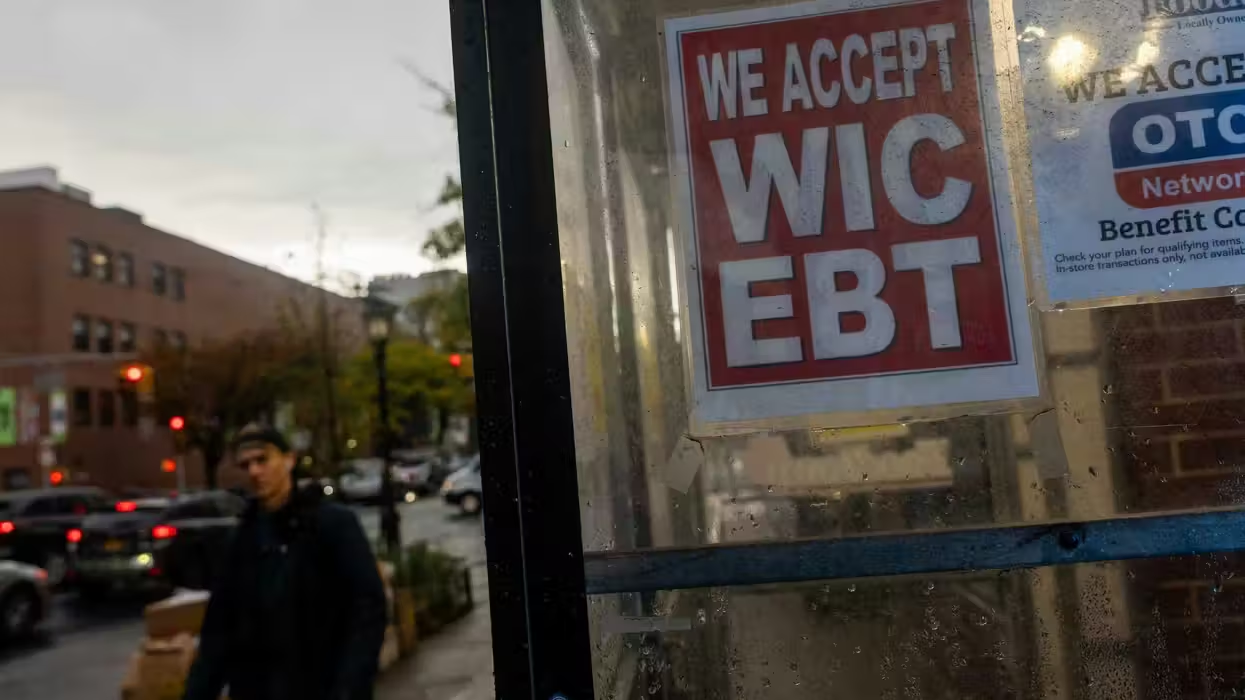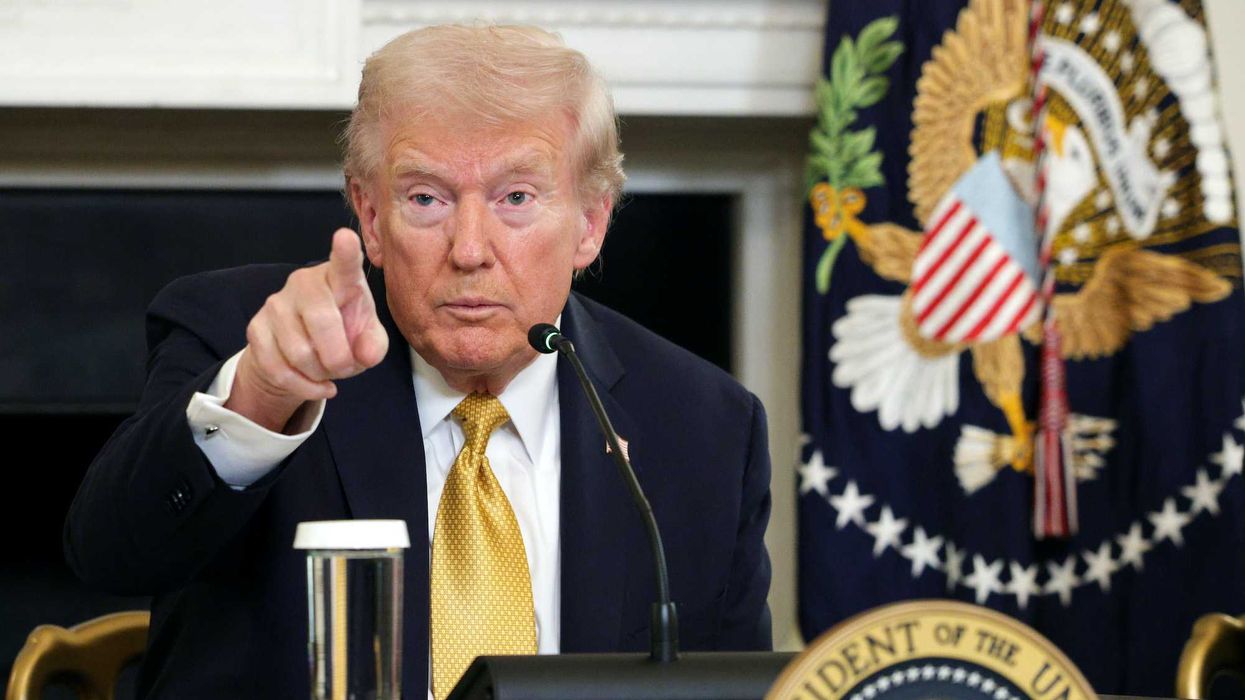
© 2025 Blaze Media LLC. All rights reserved.
U.S.-China climate change deal filled with good intentions, but no binding language
November 12, 2014
The United States and China announced an agreement Wednesday that says both countries "intend" to cut carbon emissions in the coming years, but contains no binding language requiring that goal to be met.
The deal also largely repeats China's proposal from earlier this summer, and doesn't commit China to move any faster as some had hoped.
 U.S. President Barack Obama and Chinese President Xi Jinping drink a toast at a lunch banquet in the Great Hall of the People in Beijing Wednesday, Nov. 12, 2014.
U.S. President Barack Obama and Chinese President Xi Jinping drink a toast at a lunch banquet in the Great Hall of the People in Beijing Wednesday, Nov. 12, 2014.
Photo credit: AP/Greg Baker
The agreement does represent a commitment from President Barack Obama to speed up reductions in U.S. carbon emissions, something he will have some say over as president for the next two years. Obama has already pledged to cut emissions by 17 percent by 2020, and the deal with China says the U.S. "intends" to cut emissions by 26 to 28 percent by 2025.
It says the U.S. will "make best efforts" to hit the 28 percent target.
Language pertaining to China is even softer. It says China "intends" to have peak CO2 emissions happen "around 2030," and that China will "make best efforts to peak early." But that language doesn't appear to put any limits on Chinese emissions until "around 2030," and leaves open the possibility that emissions will continue peaking after that date.
China also "intends" to have non-fossil fuels make up 20 percent of its energy consumption by 2030.
The Obama administration hailed the deal as a breakthrough that might help inspire other countries to make similar commitments.
"Our announcement can inject momentum into the global climate negotiations, which resume in less than three weeks in Lima, Peru, and culminate next year in Paris," Secretary of State John Kerry wrote Tuesday. "The commitment of both presidents to take ambitious action in our own countries, and work closely to remove obstacles on the road to Paris, sends an important signal that we must get this agreement done, that we can get it done, and that we will get it done."
But some were already questioning the novelty and ambition of the deal, given that China seemed to be largely repeating a pledge that Chinese officials made earlier this summer. Then, China was set to start capping CO2 emissions starting in 2016, and expected that peak emissions would happen by 2030.
Sen. James Inhofe (R-Okla.) on Wednesday pointed out the flaws of the deal by saying it's a "non-binding charade" that hems in the U.S. while letting China do what it wants for at least another 16 years.
"It's hollow and not believable for China to claim it will shift 20 percent of its energy to non-fossil fuels by 2030, and a promise to peak its carbon emissions only allows the world's largest economy to buy time," said Inhofe, who is expected to chair the Senate Environment and Public Works Committee next year.
"China builds a coal-fired power plant every 10 days, is the largest importer of coal in the world, and has no known reserves of natural gas," he said. "This deal is a non-binding charade."
It's also unclear how much more countries might be willing to do to reduce carbon emissions given that even if China lives up to the agreement, it will still be allowed to emit more and more CO2 for the next 16 years.
International agreements are often written as non-binding deals given the difficulties in reaching firm targets, and in finding consensus on how a binding agreement might be enforced.
But deals containing only soft targets often fall short of their goals, and the U.S. may well struggle to hold up its end of the bargain. Obama's failed export initiative from 2010 shows how difficult it can be to reach certain targets years later.
In January 2010, Obama set a goal of doubling U.S. exports after five years. Obama used 2009 as the base year, which should have made it easier to reach that goal — 2009 was a horrible year for exports after the Great Recession.
But despite starting from that low point, the U.S. will fall dramatically short of Obama's goal by the end of this year. U.S. exports were about $1.6 trillion in 2009, and by the end of 2014 they are likely to reach about $2.3 trillion, which would be just a 45 percent increase after 5 years.
Want to leave a tip?
We answer to you. Help keep our content free of advertisers and big tech censorship by leaving a tip today.
Want to join the conversation?
Already a subscriber?
more stories
Sign up for the Blaze newsletter
By signing up, you agree to our Privacy Policy and Terms of Use, and agree to receive content that may sometimes include advertisements. You may opt out at any time.
Related Content
© 2025 Blaze Media LLC. All rights reserved.
Get the stories that matter most delivered directly to your inbox.
By signing up, you agree to our Privacy Policy and Terms of Use, and agree to receive content that may sometimes include advertisements. You may opt out at any time.






